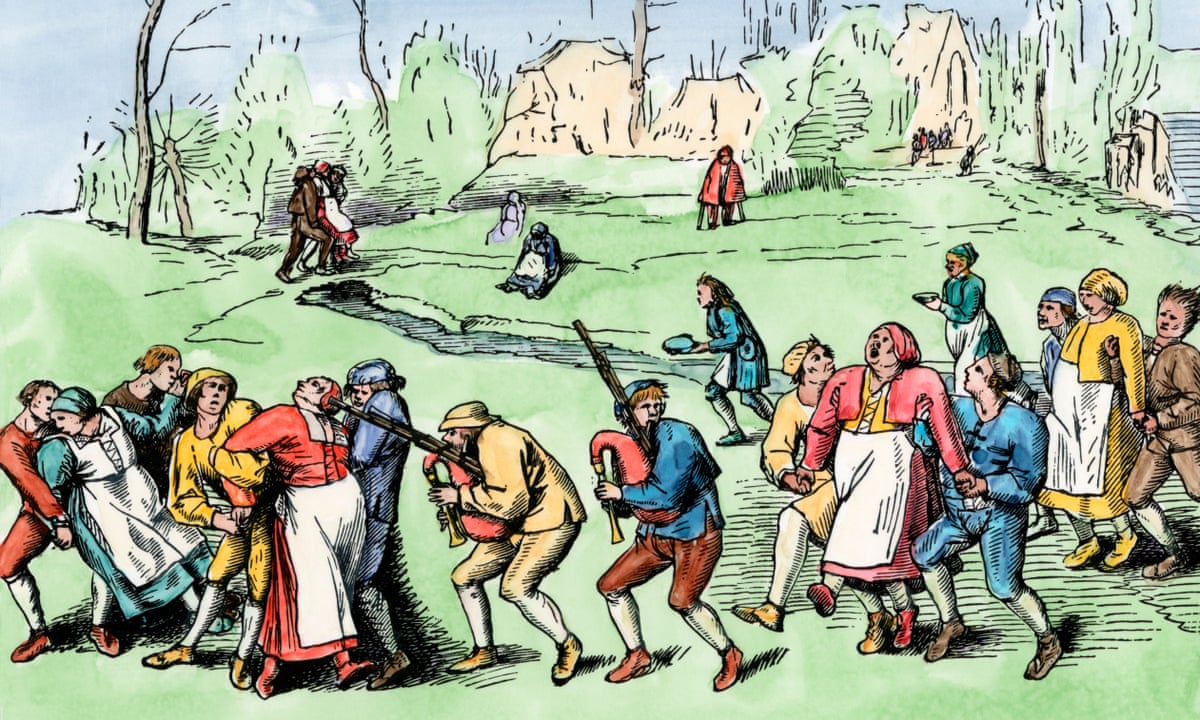In the sweltering heat of July 1518, the streets of Strasbourg witnessed one of history’s most bizarre and terrifying events. A lone woman stepped into the narrow cobblestone street and began to dance frantically. Her movements were uncontrolled, almost possessed, and what happened next would baffle historians for centuries to come.
Within a week, more than 30 people joined this mysterious dancing frenzy, their feet moving relentlessly to music only they could hear. By August, the number had swollen to 400 dancers, many of them moving until they collapsed from exhaustion. Some danced until their feet were bloodied, while others succumbed to heart attacks and strokes.
Local authorities, completely baffled by this unprecedented crisis, made a decision that would prove catastrophic. They believed more dancing would cure the affliction and constructed wooden stages in public spaces. Musicians were brought in to provide accompaniment to the endless dance, inadvertently encouraging more people to join the deadly revelry.

Historical illustration of the Dancing Plague phenomenon. Credit: Wikipedia
The dancers moved day and night, barely stopping for rest or nourishment. Their faces contorted in pain, bodies drenched in sweat, they continued their involuntary performance. Contemporary physicians recorded that many participants died from pure exhaustion, dehydration, and heart failure.
Local doctors of the time were completely mystified by this dancing fever. They ruled out supernatural causes and instead blamed it on hot blood, a common medical explanation in medieval times. The town’s authorities eventually sought help from neighboring cities as the situation spiraled out of control.

Artistic representation of the Dancing Plague of 1518. Credit: The Guardian
Today’s historians and medical experts have proposed various explanations for this extraordinary event. The most widely accepted theory suggests mass hysteria, triggered by extreme psychological stress. The region had suffered from severe famine and disease outbreaks, creating perfect conditions for a social breakdown.
Some researchers point to the possibility of ergot poisoning, a fungus that grows on rye and produces LSD-like effects. Others suggest the dancers might have been members of a religious sect, though historical records dispute this theory. The true cause remains one of history’s most intriguing mysteries.
The dancing plague finally ended in early September 1518, as mysteriously as it began. This bizarre episode stands as one of the most well-documented cases of mass hysteria in medieval Europe. It serves as a fascinating reminder of how collective human behavior can manifest in extraordinary and devastating ways.
The legacy of the dancing plague continues to intrigue scholars and casual history enthusiasts alike. It raises profound questions about mass psychology, social crisis, and the complex relationship between mind and body. While we may never fully understand what drove hundreds of people to dance themselves to death, their story remains an enduring testament to the mysteries of human nature.
References:
Dancing plague of 1518 – Wikipedia – link
The Dancing Plague of 1518 — The Public Domain Review – link
The bizarre dance epidemic of summer 1518 – The Guardian – link
Categories: Do you know, Historical Mysteries, Mass Hysteria, Medieval History, Unexplained Phenomena
Tags: 1518, Dancing Plague, epidemic, Historical Events, Mass Hysteria, medical mystery, Medieval History, Strasbourg, unexplained phenomena
Religion: Christianity
Country of Origin: France, Germany
Topic: Historical Mystery
Ethnicity: European


